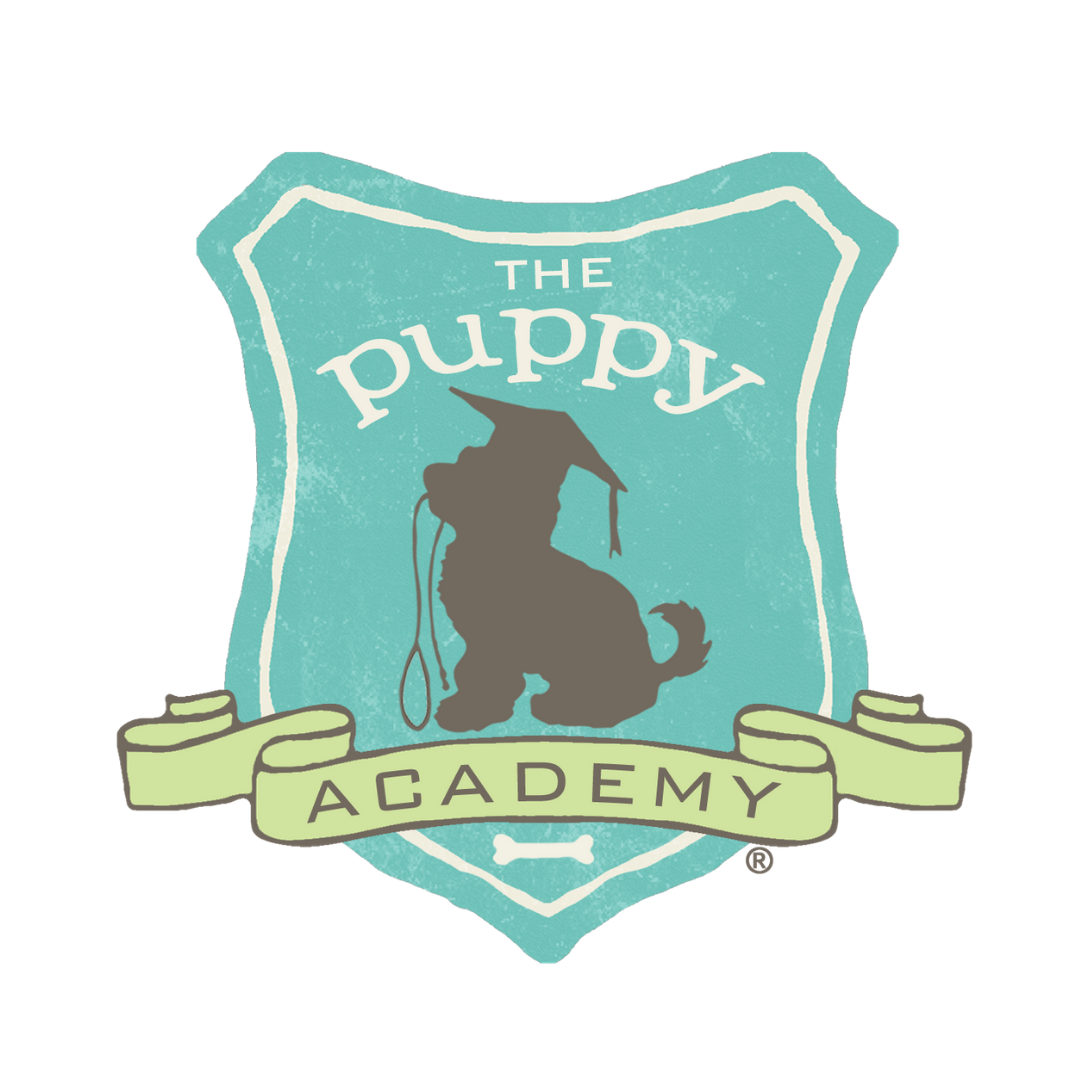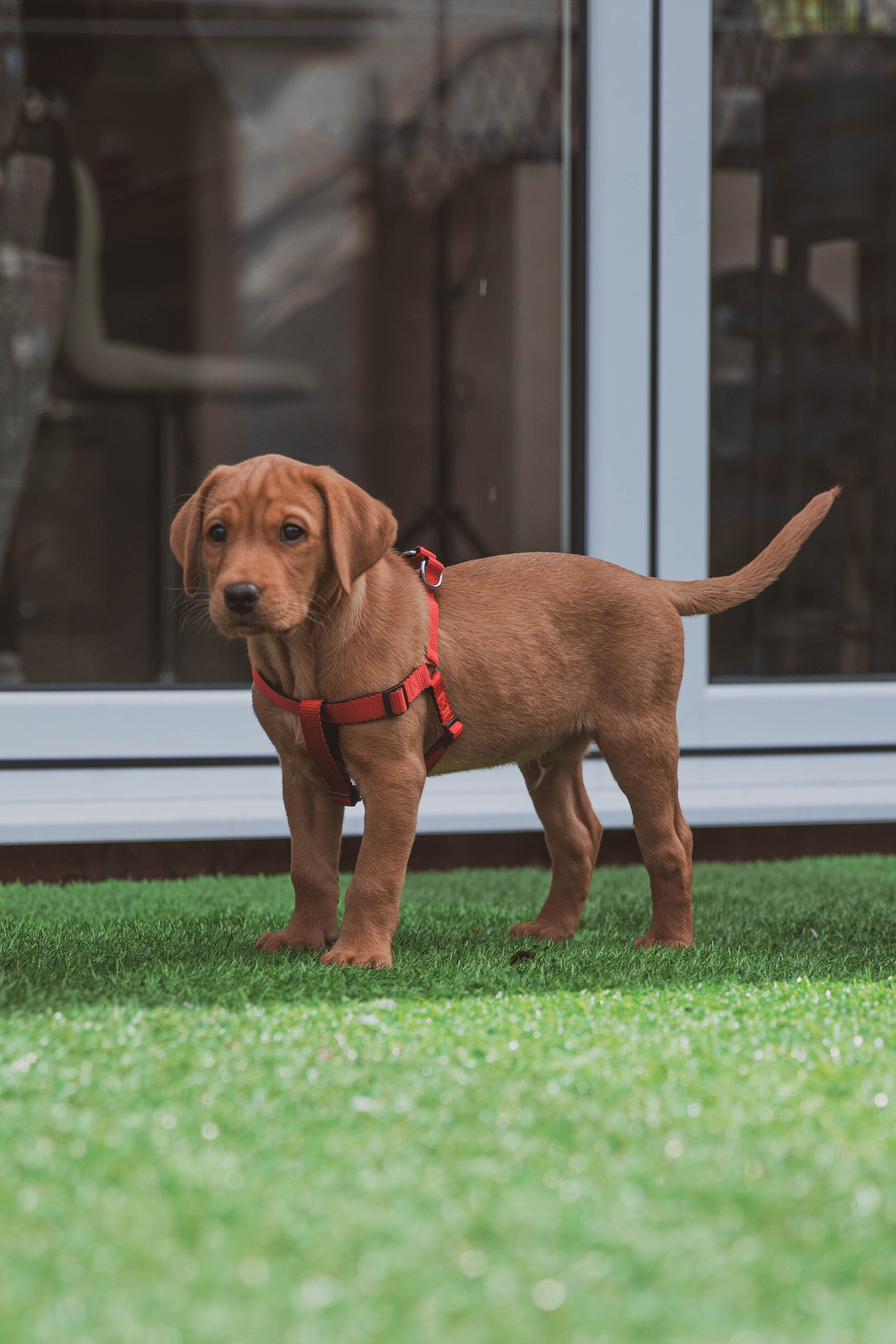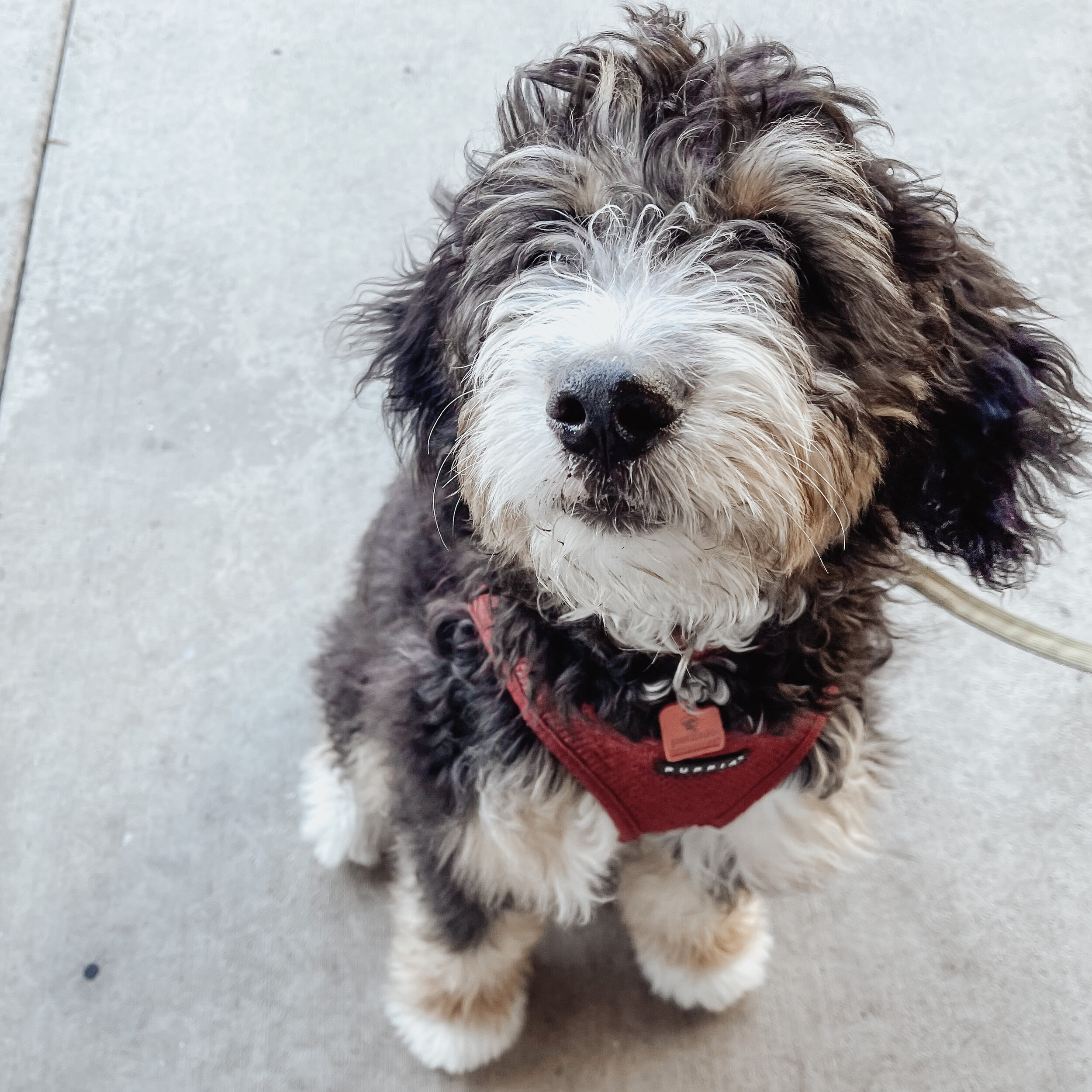Handling a small wriggly puppy takes some skill, especially when it comes to getting them used to being touched for vet visits, grooming, and other regular activities. Here are our tips to help them learn to be handled!
The Puppy Academy student, Ginger!
We LOVE introducing this topic to new puppy owners! Firstly, it’s easy to miss or overthink because of how simple it really is. But getting your puppy used to being handled and touched in certain spots prepares them for care-free vet office visits, grooming, getting their harness on, or even just being handled by people within or outside of their family! In the next few sections, we’ll cover picking the right harness and getting your puppy used to wearing one, where and how to touch your puppy, plus fun and easy handling routines you can start working on from day one of bringing home your new puppy!
JOIN US LIVE ON INSTAGRAM EVERY WEDNESDAY AT 1 PM PT FOR THE “ASK A PUPPY TRAINER SHOW!”
Picking the Right Harness for Your Puppy!
There are two common types of harnesses that you may have added to your Amazon cart at some point when shopping for your new puppy! The first being the over-the-head harness that buckles behind your puppy’s elbow, and the second (also our trainers’ favorite pick!) is a step-in harness that buckles behind your puppy’s shoulder blades. Both are excellent options but we often recommend step-in harnesses for younger puppies still learning to get used to wearing one and being handled.
One major benefit of step-in harnesses if you are still shopping for one, is how much easier it can be to get on your puppy for those frequent potty breaks! Putting it on paw-first versus over-the-head tends to be much less fussy for your puppy than something going on and off over their head. Another bonus feature is the added security of the velcro and clip! Since the closure is behind your puppy’s shoulder blades versus their shoulder they are far less likely to accidentally slip out from their harness. Of course, make sure to measure your puppy around their neck and chest to find the right size! It should be a snug fit so they can’t wiggle out but with enough space for your puppy to move comfortably without any chafing or pinching. If you have a large breed puppy, you might need to go through a few harness sizes in the first year of their life until your puppy is done growing!
When you start training your puppy, especially with a leash attached to work on obedience commands at home or walking on a leash, we always recommend using a harness versus a flat collar. Your puppy may pull at first and struggle against their leash the first few times which creates uneven and direct tension on their trachea. Using a harness helps to displace the pressure and gives you the right amount of leverage to apply light pressure on the leash when training your puppy to “Come”, for example, or follow your leash guidance during a walk!
The Fast and Easy Way to Put Your Puppy’s Harness On!
What if you have a squirmy puppy who won’t stop moving long enough for you to put on their harness? Or what if they are nervous and don’t want to go near it? We have some tips for you! Arm yourself with your puppy’s crate or playpen, a few pieces of food, or their favorite treat, and give yourself a little time to practice these routines based on whichever harness you currently are using!
It helps to have your puppy in their crate or playpen since it lessens the opportunity for your puppy to squirm away when you’re putting on their harness but this technique works well if you aren’t using them, too. For the step-in harness, take a few pieces of food in each hand and slip your hands through the leg openings. Lure your puppy toward you by letting them sniff the food. Once your puppy is engaged in eating, grab your puppy’s legs and slip the harness on, and secure the clip. Then, feel free to give your puppy the rest of their reward for a job well done! Don’t worry if this feels a bit clunky at first. After a few tries, it becomes smoother for you and far more comfortable for your puppy.
Stepping into their harness feels more natural than having one slipped over their head. Sometimes, puppies that aren’t as comfortable having something put on them or being touched yet, might start to dodge their harness making the process a bit harder and longer. If you already purchased an over-the-head harness don’t worry about exchanging or buying a new one! Instead, take some food or your puppy’s favorite treat and lure your puppy through the head opening without clipping them into the harness at first. Repeat this a few times until your puppy is comfortable standing with their head through the harness and then clip it onto them. Like we mentioned before, these harnesses also work well for puppy training but they take a little more effort to get your puppy into them!
Handling Your Puppy the Right Way!
With puppies, just like babies, they need support whenever you pick them up so the best way to do this is to keep in mind to hold both their front and hind! Slip your arm under their belly and hold your puppy’s chest. Then, tuck in their hindquarters into the nook of your elbow so their hind is supported by your hip. If your puppy seems to feel nervous or unsure, slip your other hand under their hind. Sometimes, for smaller breeds, the extra support helps them to feel comfortable and secure when being picked up!
It's so important to get your puppy used to be touched in certain areas of their body so they become tolerant of it as they grow! This will make vet visits and grooming sessions much easier for everyone involved and will lessen the likelihood of your puppy being startled and nipping as a reaction. This is especially important if your puppy will be around younger children!
Pro tip: The key spots you’ll want to practice handling your puppy are their legs, paws, paw pads, ears, mouth, belly, rear end, and tail! Each handling session should be short, anywhere from three to five minutes, and focusing on a specific area during that session.
When it comes to direct handling your puppy’s ears, legs, paws, abdomen, and tail, start off with your puppy comfortably seated on your lap or in front of you on the ground if you have a larger breed puppy. For this routine, all you need is yourself and your puppy’s food or treats, and a few minutes a day to get them feeling comfortable! If you know your puppy is already comfortable being pet or having your arm under their belly, start there and then move on to the rest of their extremities. Give your puppy a few bites of their food and say the marker word “Good!” to start getting them associated with rewards when getting handled.
Be deliberate when you handle your puppy and take your time when you touch your puppy’s extremities. For example, start with your puppy’s leg and leave your hand there while feeding your puppy some food. After doing that anywhere from three to five times for a few seconds at a time, then move onto your puppy’s paws and repeat the process. Eventually, you can even start to put your fingers in between their pads so they get fully used to having their paws handled. The reason for this process is because once you start to do regular nail trims or take them to the groomer, your puppy will be far more comfortable undergoing that experience if they already had a foundation and understand that handling is totally normal.
During these sessions, you might notice your puppy is more comfortable with some handling versus others. Give your puppy some breaks in between if you notice them start to squirm and then try again. You may even need to hold onto your puppy to help them feel secure and ask someone else in your family or a friend to reward your puppy with food! Not every puppy is the same so you’ll only be able to determine if you need to do this once you start working on these handling routines.
Pro tip: The best time to do a handling session is after some activity so your puppy is tired and more relaxed! Think about carving five minutes after your puppy has had some good playtime or puppy training, or even better, is relaxing with you at the end of the day before bedtime!
How did your first handling session go? Let us know in the comments! Remember, food and patience will be the two key factors that will help you teach your puppy that getting handled is totally normal and make physical interactions with them much easier.
Check out these blogs related to puppy training and more!
Puppyhood Made Easy for New Owners! How to Deal with Separation Anxiety in Puppies!
Puppyhood Made Easy for New Owners! Create a Puppy Potty Schedule!








